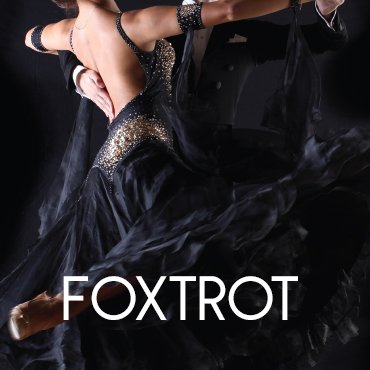The History Behind the Fox-Trot
In 1913, Harry Fox, a vaudeville comedian, introduced a trot to a ragtime song in the 1913 Ziegfeld Follies that pushed other trots into the background. It became America’s most popular dance and remains so to this day as the standard of social dances.
Fox-Trot Music
Foxtrot music is written in 2/4 or 4/4 time. The first and third beats are accented in 4/4 time. The range of foxtrot tempos makes it possible to consider foxtrot as though it were three dances: Slow Fox Trot; Medium Fox Trot; and Fast Fox Trot, also called Society Tempo. Fox Trot has two major teaching rhythms: Magic Rhythm – slow, slow, quick, quick (SSQQ) and Box Rhythm – slow, quick, quick (SQQ).
Characteristics of Fox-Trot
The basic components of foxtrot are walking steps and sidesteps. Crowded dance floors or nightclub conditions require that all three tempos be expressed with short steps. In larger ballrooms the Slow Fox Trot is characterized by longer smooth gliding steps, demanding ease of movement and control in order to give this dance an unhurried appearance
Teaching Elements & Basics of Fox-Trot
- Dance position -To develop attractive appearance in ballroom dancing
- Footwork – Work on ankle flexibility, smooth walks and chasses
- Follow-through – Develop control of timing
- Maneuverability – Learn to move comfortably in all directions
- Amalgamations – Combine steps easily and smoothly to all tempos, transitions from Swing to Fox Trot and back
- Continuity – Be able to move continuously and smoothly
- Compare/contrast – Waltz, Tango, Rumba, Swing
What Are You Waiting For?
Start Dancing Today!
Foxtrot songs and artists include:
- New York New York – Frank Sinatra
- My Baby Only Cares for Me – the Brian Setzer Orchestra
- It Had to Be You – Harry Connick Jr


